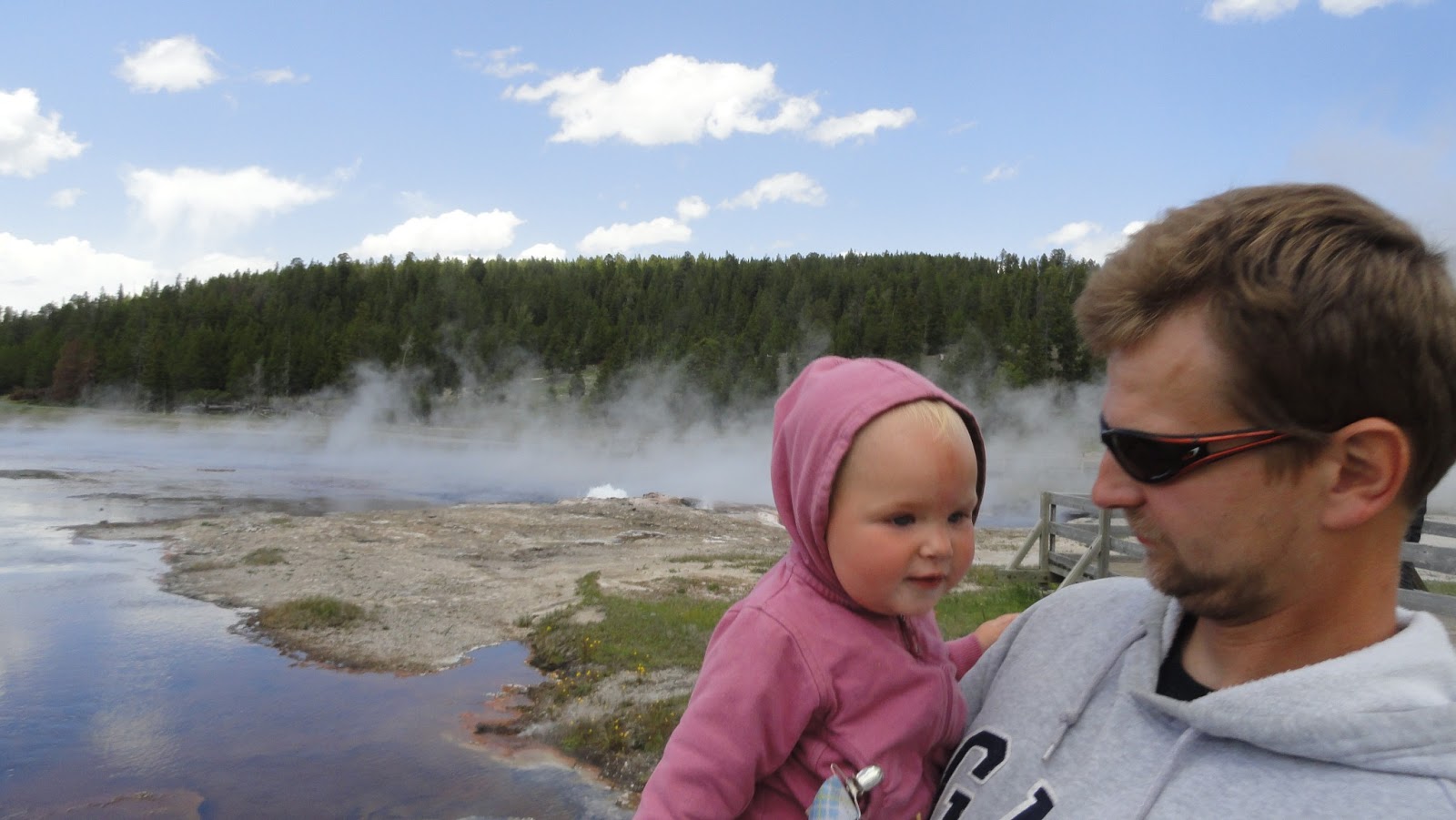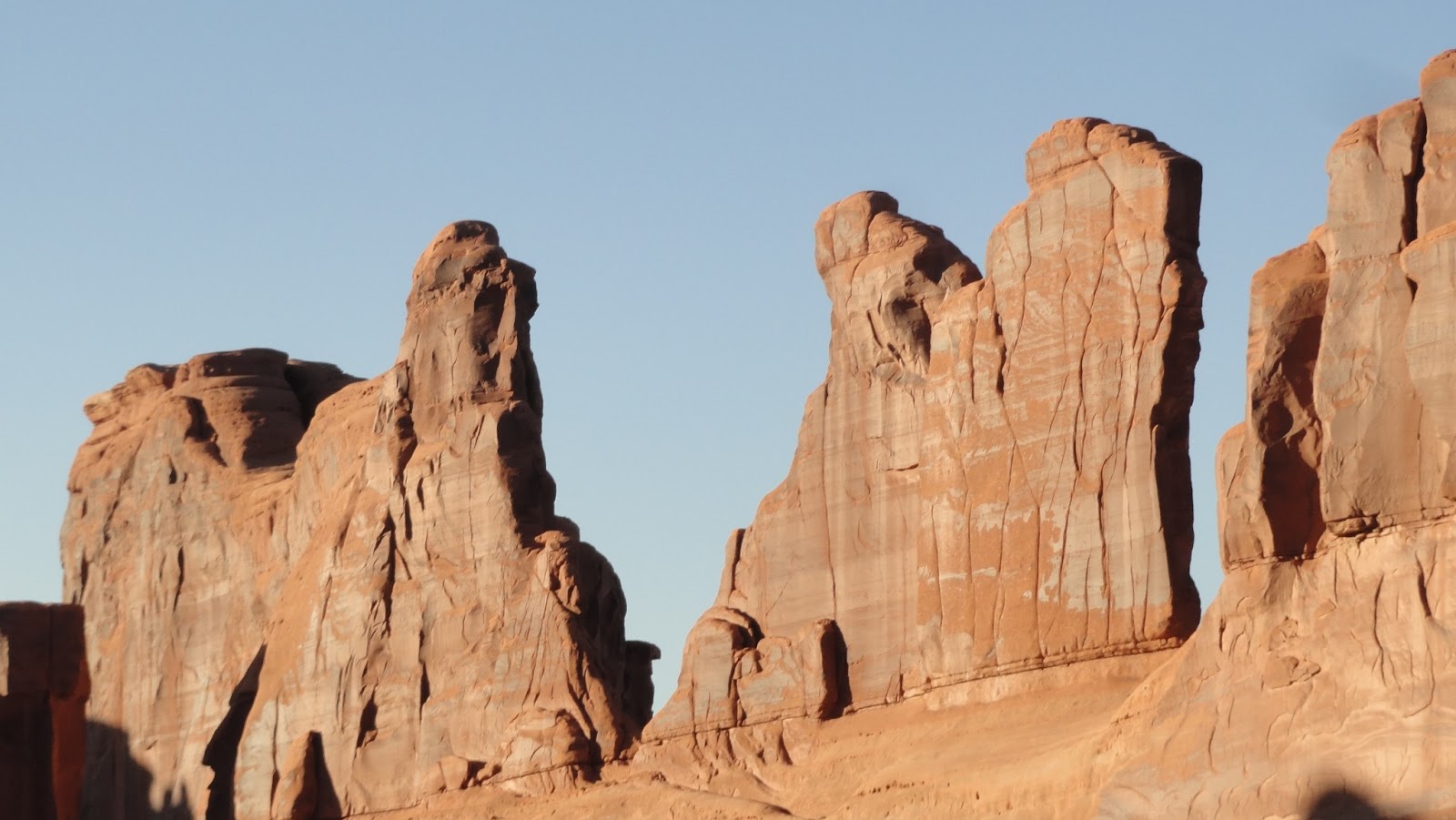We are always so amazed by everything that for a change we decided to complain a bit. After all we're Polish, that's what we do.
The same day we planned to move from our great free spot near Grand Teton to Yellowstone we found a free campsite just by the border of the park. We even read about it in official brochures of Yellowstone and Grand Teton. Campground was supposed to be by Grassy Lake Road on John D. Rockefeller Jr. Memorial Parkway. It's the area that Rockefeller gave to Grand Teton National Park. Meanwhile on Grassy Lake Road there was a sign "road closed". Visitors center nearby was closed too. And all because, as the note on the door said, budget cuts.
Crisis? Oh, come on! Closing free campsites due to crisis? They should open more of them instead, not to discourage people from traveling… We didn't get discouraged though and we went to a hotel to ask whether there are any other free campsites in the area. Yes, there is one, said young man in reception. You have to go back, turn onto forest road and cross the river... No worry, it's only foot deep. Ok, that can't be difficult. We went back, turned and, with our eyes closed, crossed it. It was our first river crossed with a trailer.
There was a campsite, not really free - it was 5 USD per night. Not having other choice we stayed. To make it even worse campsite was full of bloodsucking beasts, mosquitos that were so bad that every time we left the trailer it felt like being in one of more drastic scenes of "The Walking Dead"...
 |
| Yellowstone |
Ok, enough with complaining, just wanted to give you a sample of Polish specialty:) Anyway, it seems this is the cheapest camping option near southern border of Yellowstone. The creek we had to cross was shallow enough not to get into the trailer or car, but deep enough to make our adrenaline level jump. Still, nothing comparing to hurricane Sandy. And on top of mosquitos there were also toilets, picnic tables and fire rings. Good enough.
 |
| Still Yellowstone and not Shieffield Creek Campground |
If you'd like to stay there here are the directions. Going north on "191"/"89" from Grand Teton to Yellowstone, some 2 miles before the border of Yellowstone, just before bridge on Snake River and some 1/3 mile before Flagg Ranch and Grassy Lake Road you have to take right. Follow the road by the river until you have to cross it and once you do there will be campground with sites and self paid station. It's a bear area, there are warnings not to leave food outside or in a tent. We haven't seen any (un)fortunately, but there are some wild horses running around.
 |
| Maciek next to Yellowstone River |
Next morning we went to Yellowstone. First impression, from visitors center, was not too good. Yes, there is a bus but it's 25 USD per day, to our standard question about what to see ranger replied with just couple sentences and when we kept asking she told us to get a map (50 cents each) and brochures. So we did. We sat down with a map and got overwhelmed by the size of the park.
Where to go? What to see? It's not easy. The park is really huge. It's some 60 by 60 miles, the loop going around is more than 100 miles. It's impossible to do it in one day. But you can do for example one third of the loop in a day, seeing all the attraction on one side of the road, and than go back seeing attractions on the other side. 1/3 is a maximum for a day, no matter whether you're there with kids or not. Our 4 days in Yellowstone was not enough. We will be back there for sure.
We read that when first travelers who got there were talking about what they'd seen nobody would believe them. One of them said that rivers in Yellowstone flow so fast that water starts boiling from friction. We wouldn't believe it if we didn't see it. Not knowing (as usually) what to expect, we thought there would be a few geysers spread all around the park. After seeing what we saw we're just wondering why the first travelers didn't call it (like settlers from Utah would do) for example Devil's Kitchen, Boiling Satan's Guts or something of that sort...
Yellowstone bubbles, shimmers and boils. There are lots and lots of geysers and hot springs, you can see steam all around, water and smoke jets up from underground, plus the colors are stunning, the hottest springs are clear blue, cooler ones are inhabited by orange bacterias/algaes, in between temperature makes water green (as photosynthetic organisms can handle the medium heat), there are also bubbling mud pools, wells, fountains and terraces with boiling water, smell of rotten eggs in the air... And rivers, lakes, mountains, woods, wild animals including bisons, moose and bears.
Only the area of the most famous geyser - Old Faithful, called Upper Gayser Basin is a few hours walk. It's crowded, but just near the Old Faithful, few minutes away and it gets more lonely. Yellowstone, by the way, is a place we got truck the most sby cultural differences. If we come across an American on a path, he/she would stop far before us and stand back to let us through, apologizing, saying something nice to Kalina or Maciek or having a little chat with us. Europeans would smile and make way but they don't get in touch. Asians have two strategies. If they are not in a hurry they would smile or say a few nice words about the kids. But usually passsing by they look like running through metro in Tokio, squeezing through, pushing around, jumping over stroller, whatever it takes.
Old Faithful is now a respected symbol of Yellowstone. But it wasn't always like this. After being discovered by new comers from the East it used to be ... washing machine. When it was quiet they'd throw dirty clothes in and then it would spit out clean things up in the air. That was in 1882, 6 years after national park was established. In the beginning it was a reallly wild west here. There was problem with poachers, it was difficult to control such a huge area. After all, with some help from media, it was solved. One reporter happened to be in Yellowstone, when one of the poachers was caught with six heads of bisons he killed. One picture, one article and it was enough to get Yellowstone more fundings. Good old times... Maybe if we took a dramatic picture crossing the river with Eddie, they would reopen this closed free campsite…
But there is really nothing to complain about. Yellowstone is a great place and despite our fear regarding the size of it, it is very user-friendly, also for travelers with kids. There are many places you can see during short walks, up to 15-20 minutes round trip. Almost all places are stroller accessible - there are boardwalks to walk around geysers. It's because of safety - thermoactive area is covered with thin crust, there were many accidents in the past due to falling into boiling water - there are warning signs founded by parents of 9-year-old who died in 1970 when he got to close to geyser, crust broke and he fell in.
We were more careful, although one time we got tempted to check how hot is the water. We did and people around started shouting at us right away, not to touch it, we'll get scalded, bacteria will eat us alive and acids will burn our eyes out. Bit dramatic, but maybe it is better to keep your hands away.
Besides Yellowstone has natural thermometers. Where water is bubbling we can expect it's over 200F, as this is the boiling temperature at 7200 feet (don't try to boil potatos when camping in or close to the park, it was a really frustrating experience). If it's beautiful blue but doesn't bubble, it's probably less than 195F. Orange and green is much cooler.
Besides Yellowstone has natural thermometers. Where water is bubbling we can expect it's over 200F, as this is the boiling temperature at 7200 feet (don't try to boil potatos when camping in or close to the park, it was a really frustrating experience). If it's beautiful blue but doesn't bubble, it's probably less than 195F. Orange and green is much cooler.
So we got more careful and and we didn't touch anything anymore. We were driving around and walking and driving and walking... We will try to write everything about it in next entry.
















































